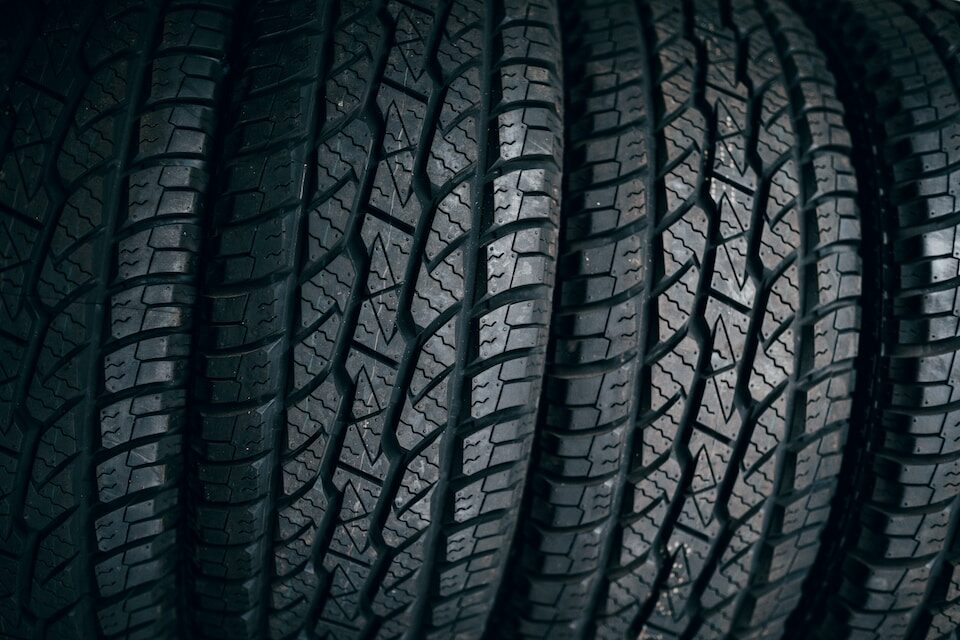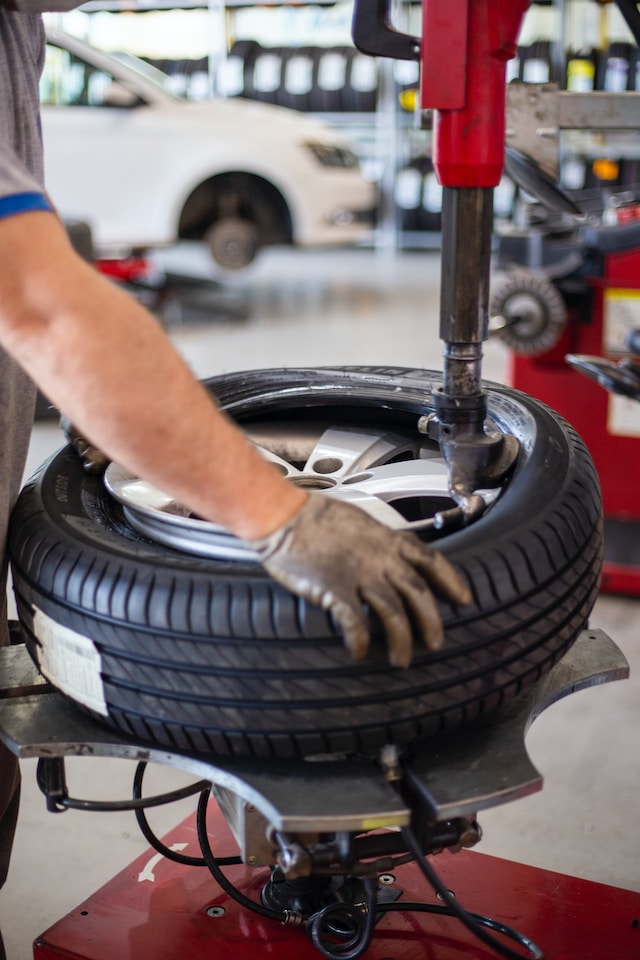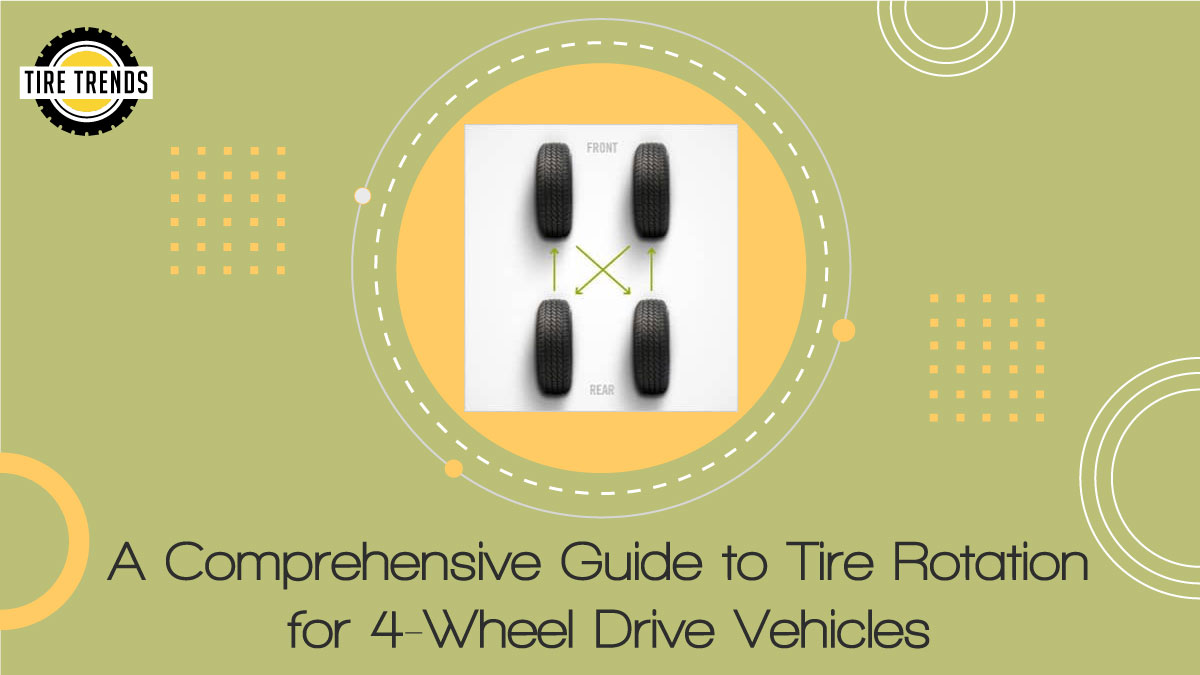As the engine roars to life, and the road ahead beckons with untamed allure, 4-wheel drive vehicles embrace a spirit of adventure like no other. But beneath the surface of this exhilarating freedom lies a critical aspect of maintenance often overlooked: tire rotation.
Welcome to the comprehensive guide that unravels the secrets of ensuring optimal performance and longevity for your 4×4 companion.
From mastering the art of pattern shifting to unlocking the symphony of traction and balance, this article will navigate you through the rugged terrains of a tire rotation, empowering you to conquer every journey with confidence and prowess. Let’s embark on this tire-rolling odyssey together!
Understanding Tire Rotation
You might be wondering, what exactly is tire rotation, and why is it so important for your trusty 4-wheel drive vehicle? Well, fret not because we’ve covered you with all the ins and outs of this crucial maintenance practice.

Picture this: you’re cruising down the open road, enjoying the thrill of your 4WD vehicle, but little do you know, your tires are quietly wearing down unevenly. Tire rotation is the remedy to this problem, and it’s like a symphony for your wheels. It’s all about shuffling those tires around to distribute the wear and tear more evenly.
Now, when it comes to 4WD vehicles, we’ve got different rotation patterns up our sleeves. Each is like a dance move that your tires perform, ensuring they wear down harmoniously.
- The classic front-to-rear rotation is where the front tires swap places with the rear ones.
- Then, we have the cross pattern rotation, almost like a criss-cross dance, where the tires on the front-left and rear-right change positions, and vice versa.
- Lastly, the X-pattern rotation is like a graceful X-mark in the sand, where the front-left tire moves to the rear-right, and the front-right goes to the rear-left.
“But how often should I perform this tire tango?” you might ask.
Well, it depends on the type of terrain you typically conquer with your 4WD beast. For normal driving conditions, we recommend a tire rotation every 5,000 to 7,000 miles, or about every six months, whichever comes first. However, if you’re often venturing off-road, you might want to cut in for a rotation every 3,000 to 5,000 miles, giving your tires a chance to show off their well-worn grooves.
Listen, we get it, life gets busy, and car maintenance might not always be top of mind. But trust us when we say that regular tire rotation is the secret to long-lasting tire love. It’s like a spa day for your wheels, pampering them and ensuring they wear down gracefully.
So, the next time you’re due for a tire rotation, gather your 4WD crew, jack up your vehicle with confidence, and let the dance begin. Your tires will thank you with improved traction, stability, and even better fuel efficiency. Don’t forget a happy tire makes for a happy ride!
Signs and Symptoms of Uneven Tire Wear

We get it – your 4-wheel drive vehicle is your pride and joy, and you want it to perform at its best on and off the road. But, hey, have you noticed some funky wear patterns on your tires lately? Uneven tire wear can be a bummer, and it’s essential to spot it early before it becomes a bigger headache.
So, let’s talk about those signs and symptoms of uneven tire wear that you should keep an eye out for:
1. The Feathered Edge Dance
Ever run your hand along the tire tread and feel like you’re petting a two-faced creature? If you sense smoothness on one side and roughness on the other, it’s a classic case of feathering. When your tires have this “feathered edge” thing going on, it’s usually a sign of some misalignment or suspension issues.
2. The Cupping Carnival
Imagine taking a ride on a bumpy rollercoaster – not fun, right? Well, that’s exactly what cupping does to your tires. If you see random patches of wear on your tire’s tread, like little dips or cups, you might have a cupping carnival going on. Suspension problems or lousy shock absorbers are often to blame for this not-so-amusing show.
3. The Camber Conundrum
Picture this: your tires wear down faster on the inside or outside edge. It’s like they can’t decide whether they want to be buddies or rivals! This uneven wear, known as camber wear, is commonly caused by improper wheel alignment.
4. The Toe Trouble
No, we’re not talking about tapping your foot to the music – we’re talking about toe wear. When your tire’s tread wears more on one side than the other, it’s a toe-related issue. Misaligned wheels are often behind this funky dance move.
5. The Patchy Party
Have you noticed a specific part of your tire wearing down faster than the rest? It’s like that area is trying to have a party of its own! Unfortunately, this patchy wear is anything but celebratory and usually results from overloading your vehicle or inconsistent tire pressure.
Keep in mind that uneven tire wear not only ruins the fun but also compromises your vehicle’s performance and safety. So, if you spot any of these tire-wear dance moves happening on your 4WD’s rubber companions, don’t wait – get them checked out by a pro.
But hey, don’t fret too much! Identifying uneven tire wear early allows you to take action and address the issues before they escalate into costly problems. Plus, proper maintenance can save you money on premature tire replacements and ensure your 4WD performs like a champ both on and off the road.
Remember, your 4-wheel drive deserves some love, care, and attention – and your tires are a big part of that equation. So, watch for those wear patterns, and your vehicle will thank you with smooth rides and better adventures!
Benefits of Regular Tire Rotation

Tire rotation is more than just a routine maintenance task; it’s a small investment that yields significant benefits for 4-wheel drive vehicles. As you confidently hit the road, knowing your tires are in top-notch condition, let’s explore the numerous advantages of regular tire rotation.
1. Prolonging Tire Lifespan and Cost Savings
When you rotate your tires regularly, you distribute the wear more evenly across all four wheels. This balanced wear pattern helps to extend the overall lifespan of your tires. As a result, you won’t have to replace them as frequently, saving you precious bucks in the long run. It’s like giving your tires a little TLC, rewarding you with extended durability and better performance.
2. Enhanced Traction and Stability
Uneven tire wear can seriously impact your vehicle’s grip on the road. By rotating your tires, you ensure that all four tires wear out at a similar rate, maintaining consistent traction across different terrains.

This improved traction enhances your driving experience and contributes to better stability and control, especially during harsh weather conditions or off-road adventures.
3. Improved Fuel Efficiency and Reduced Emissions
You might not have guessed it, but regular tire rotation can positively influence your vehicle’s fuel efficiency. When your tires wear out unevenly, it creates imbalances in the wheel’s weight distribution, leading to increased rolling resistance.
By rotating your tires, you keep that resistance in check, allowing your vehicle to move more smoothly, consuming less fuel. As a bonus, you’ll also reduce harmful emissions, contributing to a greener environment.
4. Safety Advantages of Even Tire Wear
Your safety on the road is paramount, and that’s where tire rotation plays a crucial role. Even tire wear ensures that all four tires maintain consistent levels of traction and handling capabilities.
This balanced performance minimizes the risks of unexpected blowouts, skidding, or hydroplaning. Whether navigating busy city streets or exploring rugged trails, properly rotated tires provide peace of mind and increased safety for you, your passengers, and other road users.
Step-by-Step Guide to Rotating Tires in 4WD Vehicles
It’s time to roll up our sleeves and get into the nitty-gritty of tire rotation for our trusty 4-wheel drive vehicles. Knowing how to do this yourself can save you some cash, ensure your tires last longer, and perform at their best.
Step 1: Gather Your Gear
Before diving in, let’s ensure we have everything we need. Get your trusty jack, a lug wrench, and a torque wrench. Safety comes first, pals, so don’t forget some sturdy jack stands to keep the car secure while we work our magic.
Step 2: Lift ‘Em Up
Park your vehicle on a flat surface, engage the parking brake, and start loosening the wheel nuts. Then, carefully jack up one corner of the car at a time. Now, place those jack stands under the vehicle frame for some extra support.
Step 3: Off with the Old, On with the New
Once the car is safely propped up, it’s time to remove those tires. Start with the front ones, unscrewing those nuts and gently pulling the tire off. Pay attention to tread wear; this can give you valuable insights into your vehicle’s health.
Step 4: Move ‘Em Around
Alright, here comes the fun part. It’s time to move those tires around, depending on your choice of rotation pattern. You can go for the classic front-to-rear rotation or try something spicier like the cross or X-pattern rotation.
Step 5: Tighten Up
Now that your tires have found new spots, it’s time to get those wheel nuts back on. Remember, don’t overtighten! Grab that torque wrench and carefully tighten each nut to the manufacturer’s specifications.
Step 6: Lower It Down
All right, we’re almost done. Carefully lower your car back down to the ground, remove those jack stands, and give each tire a final torque check. Safety is key, folks!
Step 7: Post-Rotation Inspection
We’re not quite finished yet. Take a few minutes to inspect your handiwork. Make sure all the nuts are secure and the tires are sitting pretty. If something looks off, better to catch it now than later.
And there you have it, friends! Your tires are now expertly rotated, and your 4WD vehicle is ready to hit the road with style and grace. Remember, different vehicles may have specific recommendations, so always check your owner’s manual for the best rotation pattern for your ride.
By performing this simple maintenance task every 5,000 to 7,000 miles or as your vehicle’s manufacturer recommends, you’re ensuring even tire wear, improved handling, and overall better performance. Your tires will thank you, and your wallet will too. Happy rotating, folks!
Tips for Tire Maintenance in Your 4WD Vehicle

Maintaining your 4-wheel drive vehicle’s tires is crucial for both performance and safety. By following these simple yet essential tips, you can ensure your tires stay in top shape, providing you with a smooth and worry-free driving experience.
Regular Tire Pressure Checks and Adjustments
Keeping your tires properly inflated is vital for their longevity and performance. Make it a habit to check your tire pressure at least once a month using a reliable tire pressure gauge. Compare the readings with the manufacturer’s recommended levels, usually found in your vehicle’s manual or on a sticker inside the driver’s door jamb.
Inflating your tires to the correct pressure extends their lifespan and improves fuel efficiency, saving you money on gas. It also enhances your vehicle’s handling and traction, especially during off-road adventures or challenging driving conditions.
Wheel Alignment and Suspension Inspection
Wheel alignment and suspension are critical in tire wear and vehicle handling. If your 4WD vehicle experiences a jarring impact, such as hitting a pothole or a curb, it may throw your wheel alignment off-kilter. Additionally, prolonged off-road driving can also affect alignment over time.
Check your vehicle’s alignment regularly with a professional mechanic to maintain proper alignment. A well-aligned vehicle ensures even tire wear, enhances overall driving stability, and reduces unnecessary strain on the tires and suspension components.
Tire Balancing Importance and Techniques
Tire balancing is essential to achieve an even weight distribution around each wheel and tire combination. Unbalanced tires can cause vibrations, leading to uneven tire wear and a less comfortable ride.
Whenever you mount new tires, ensure they are properly balanced. If you notice any vibrations or uneven wear on your current tires, it’s time to have them balanced by a skilled technician. Regular tire balancing helps prevent premature tire wear and keeps your driving experience smooth and enjoyable.
Rotating Full-Size Spare Tire Considerations
If your 4WD vehicle comes with a full-size spare tire, including it in your regular tire rotation schedule is crucial. Many drivers forget to rotate the spare tire, leading to a significant difference in tread depth between the spare and the other tires.
Including the spare tire in your rotation’ll ensure all your tires wear evenly, extending their lifespan and maximizing your investment. Additionally, a properly rotated spare tire will be ready to go whenever you need it, providing peace of mind during unexpected tire emergencies.
Remember, proper tire maintenance saves you money in the long run and ensures a safer and more enjoyable driving experience. By following these tire maintenance tips for your 4WD vehicle, you can confidently hit the road, knowing your tires are in the best possible shape. Happy driving!
Frequently Asked Questions
Can I Rotate Tires with Different Tread Depths?
While it’s not ideal, sometimes you might find yourself in a pinch with varying tread depths on your tires. If the difference is minimal, rotating them can still be an option. However, remember that significant variations in tread depth can affect handling and traction, so aim to keep the differences within a reasonable range if you have to rotate them.
Is Tire Rotation Necessary if I Have All-Terrain Tires?
Absolutely! All-terrain tires are designed to take on a variety of challenging road conditions, but they are not invincible. Regular tire rotation is still crucial to ensure even wear and extend the life of your expensive rubber companions. Don’t skip this important maintenance step because you have robust tires – they also need some love!
What Happens if I Skip Tire Rotation?
Well, skipping tire rotation is a bit like giving your tires a one-way ticket to uneven wear land. As your tires bear the brunt of the road, they naturally wear differently based on their position on the vehicle.
If you neglect rotation, you’ll notice some tires wearing out faster than others, which can lead to decreased handling, reduced traction, and more frequent replacements. Save yourself the headache, and rotation is the way to go!
Can I Rotate Tires Less Frequently if I Rarely Use 4WD?
While it’s true that 4WD usage can contribute to uneven tire wear, other factors also come into play. Even if you don’t use 4WD all the time, your tires can still experience uneven wear due to various driving conditions and road surfaces.
To maintain optimal performance and longevity, stick to your specific vehicle’s recommended tire rotation schedule.
How Do I Identify Tire Alignment Issues After Rotation?
Great question! After rotating your tires, watch for signs of misalignment, such as uneven wear on the newly positioned tires, a pulling sensation to one side while driving, or vibrations in the steering wheel.
If you notice any of these red flags, it’s essential to get your alignment checked and corrected by a professional mechanic. Proper alignment ensures your tires wear evenly and keeps your 4WD cruising smoothly.
Conclusion
In conclusion, understanding the importance of tire rotation for 4-wheel drive vehicles is crucial for maintaining optimal performance, safety, and cost-effectiveness. By following the recommended rotation patterns and conducting regular maintenance, drivers can prolong tire lifespan, enhance traction, and improve fuel efficiency.
Don’t overlook the signs of uneven tire wear and address them promptly to ensure a smooth and safe driving experience. Prioritize tire rotation as a fundamental part of your vehicle’s care, and enjoy the benefits of a well-maintained 4WD vehicle.

